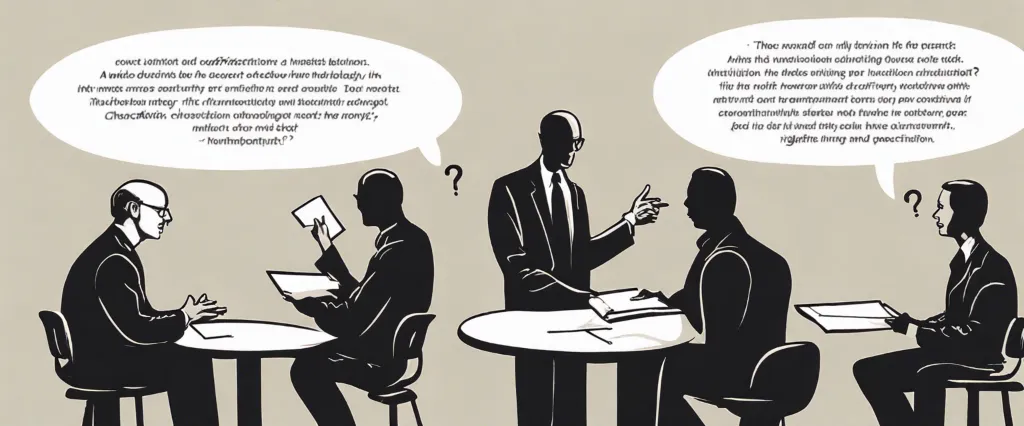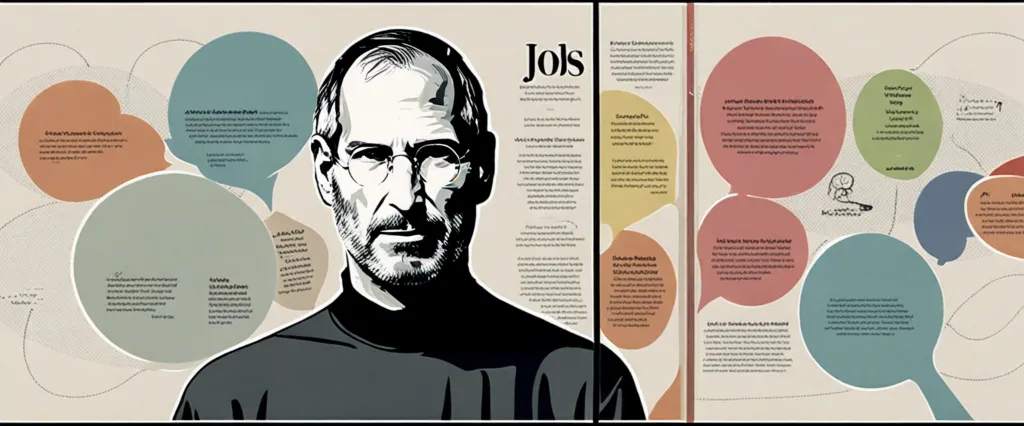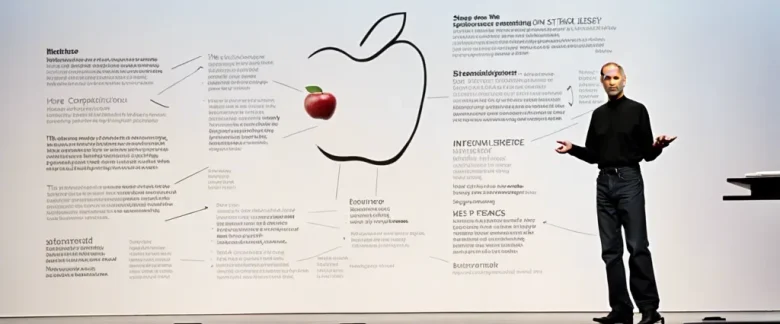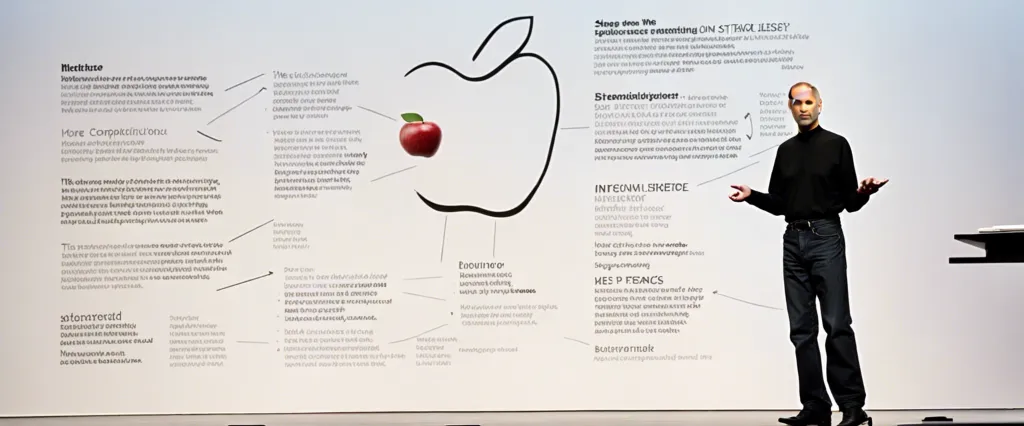In “The Presentation Secrets of Steve Jobs” by Carmine Gallo, readers are guided through the exceptional public speaking skills of the late Apple co-founder, Steve Jobs. Drawing upon years of research, Gallo unveils the techniques, strategies, and mindset behind Jobs’ legendary presentations. By dissecting numerous keynote speeches, Gallo not only provides a comprehensive analysis of Jobs’ presentations but also offers practical tips and lessons that can be applied by anyone seeking to captivate an audience. Known for his expertise in communication, Carmine Gallo is a renowned author, keynote speaker, and communication coach who has helped individuals and businesses communicate more effectively and authentically around the world. With a deep understanding of Jobs’ presentation techniques, Gallo shares invaluable insights, inspiring readers to become more persuasive and memorable presenters.
The Power of Simplicity
This principle emphasizes Steve Jobs‘ remarkable ability to simplify complex ideas and deliver compelling presentations that captivated audiences. Jobs’ presentations were essential in driving the success of Apple Inc. and establishing Jobs as a master of communication.
Gallo provides several insights into how Jobs employed simplicity in his presentations. Firstly, Jobs consistently delivered a single message throughout his keynote speeches, ensuring that his audience would remember and understand his core idea. By focusing on one key point, Jobs eliminated confusion and maximized impact. Additionally, he utilized a simple structure, often incorporating the “rule of three” to break down complex concepts into three concise sections. This structure made his presentations easy to follow and allowed for better retention of information.
Another aspect of Jobs’ simplicity was manifested through his use of visuals. Jobs relied heavily on slides with minimal text and highly visual elements such as images, charts, and videos. This approach allowed him to grab attention and engage his audience, ensuring their focus remained on his message rather than excessive text or complicated diagrams. Moreover, Jobs’ use of compelling visuals created an emotional connection with his audience, making his presentations memorable and inspiring.
Furthermore, Jobs’ authenticity and passion contributed to the power of simplicity in his presentations. He spoke from the heart, using personal stories and anecdotes to convey his ideas. By avoiding jargon and complex technical details, Jobs appealed to a broad audience, making his presentations accessible to both experts and non-experts alike.
By following these principles, anyone can improve their presentation skills and communicate their ideas more effectively.
Creating a Story Worth Telling
Gallo emphasizes the power of storytelling in capturing an audience’s attention and leaving a lasting impact. He argues that a great story is essential to engaging listeners and effectively conveying a message. Jobs understood this concept very well and used it to his advantage throughout his career.
The chapter delves into the elements that make a story worth telling. Jobs believed in the power of a simple, concise, and clear message. He emphasized the importance of focusing on a core concept or a single idea that can be easily understood and remembered by the audience.
Additionally, Jobs employed the storytelling technique of using personal anecdotes and experiences to connect with his audience on an emotional level. He would often begin his presentations with a personal story that would set the tone for the rest of his talk. This allowed him to establish a sense of relatability and build trust with his listeners.
Gallo provides several examples of Jobs’ effective storytelling techniques, such as using vivid language, creating suspense, and employing visual aids to support his narrative. Jobs had a remarkable ability to bring his products to life through his stories, making them more than just technological devices but objects of desire.
Through powerful examples from Steve Jobs’ career, Gallo offers valuable insights on crafting compelling stories that leave a lasting impression on listeners.
Delivering an Unforgettable Opening
Jobs was renowned for captivating audiences from the very beginning, leaving a lasting impression that set the tone for his entire presentation.
Gallo emphasizes that Jobs understood the importance of starting strong to immediately engage his listeners. He often began his presentations with a personal story or an intriguing statement, which served as a hook to grab the audience’s attention. This approach helped create an emotional connection and made people eager to hear what he had to say next.
Jobs also had a remarkable ability to simplify complex ideas, making them relatable and understandable for his audience. By using simple language and avoiding technical jargon, Jobs made sure his message was accessible to everyone. This further enhanced his opening, as it made his presentations inclusive and easily digestible.
Additionally, Gallo highlights Jobs’ use of visuals to support his opening. Whether it was through powerful imagery, videos, or prop usage, Jobs carefully selected visuals that were aligned with the message he wanted to convey. By incorporating visually stunning elements, Jobs created a sensory experience that captivated his audience and left a lasting impression.
By understanding and implementing these strategies, presenters can elevate their own presentations and create a memorable opening that grabs attention and sets the stage for success.
Developing Visual Slides

According to Gallo, Jobs believed in the power of simplicity and clarity when it came to visual aids. He emphasized that slides should be minimalistic, avoiding cluttered designs and excessive text. Visual aids should supplement the speaker’s message, not replace or distract from it. Jobs emphasized the use of high-quality images that evoke emotions and create a connection with the audience.
To develop visual slides like Jobs, Gallo recommends following four key principles. First, use a large, bold headline to convey the main message of each slide. A clear and concise headline immediately captures attention and communicates the core idea. Secondly, limit the number of words on each slide and replace them with compelling visuals. This approach keeps the audience engaged and prevents overload of information. Thirdly, employ visual metaphors to simplify complex concepts and make them relatable. Metaphors aid in understanding and enhance memory retention. Lastly, utilize text sparingly and use it effectively by incorporating different fonts, sizes, and colors to create emphasis or contrast.
Gallo further emphasizes the importance of rehearsing presentations extensively to ensure seamless delivery. By practicing each slide transition, Jobs was able to create a harmonious flow and maintain engagement throughout his presentations.
By incorporating simplicity, strong headlines, compelling imagery, metaphors, and limited text, presenters can captivate their audience and effectively communicate complex ideas. Jobs’ mastered techniques provide invaluable guidance for anyone looking to improve their presentation skills.
Mastering Stage Presence
Gallo begins by emphasizing the importance of stage presence, stating that it is not just about commanding the stage, but also about connecting with the audience on a deeper level. He highlights Steve Jobs’ ability to maintain eye contact, exuding confidence and trustworthiness. Jobs believed that eye contact created an emotional connection with his audience, allowing him to effectively convey his message.
Furthermore, Jobs utilized props and demonstrations to amplify the impact of his presentations. Whether it was showcasing the sleek design and functionality of Apple products or playing videos to demonstrate their capabilities, Jobs understood that visuals had a profound effect on engaging the audience, making the presentation more dynamic and memorable.
Gallo also discusses the significance of rehearsing extensively. Jobs practiced his presentations relentlessly, ensuring that every movement, word, and pause was deliberate and impactful. By rehearsing, Jobs was able to express authenticity and deliver his messages with unwavering conviction, further enhancing his stage presence.
Additionally, Jobs masterfully employed storytelling in his presentations. He understood that stories resonated with people on a deeper level, allowing them to connect and form emotional attachments. Through carefully crafted narratives, Jobs was able to transform complex ideas into relatable concepts, captivating his audience and leaving a lasting impression.
By learning from Steve Jobs’ techniques, individuals can enhance their stage presence and deliver impactful presentations that leave a memorable and lasting impact.
Igniting the “Aha” Moment
In this book, Gallo explores the techniques and strategies Jobs employed to create captivating and unforgettable presentations.
Gallo begins by emphasizing the importance of storytelling in presentations. He explains how Jobs used narratives to engage his audience and convey complex ideas in a simple yet impactful way. Jobs would paint a vision for the future and explain how his products fit into that vision, stimulating an “aha” moment in the minds of the listeners.
Moreover, the author highlights how Jobs carefully crafted each presentation to have a clear and concise message. He focused on a single key point, eliminating any distractions and ensuring that his audience would remember the core idea long after the presentation ended.
Gallo also emphasizes the significance of creating visually compelling slides. He outlines the principles of simplicity, using minimal text and powerful images to enhance the audience’s understanding and emotional connection with the topic at hand. Additionally, the use of props and demonstrations further enhanced Jobs’ presentations and made them truly memorable.
Furthermore, the book explores Jobs’ passion and enthusiasm while presenting. Gallo explains that Jobs’ excitement was contagious, and he was able to inspire and motivate his audience through his genuine passion for his products and ideas.
Through effective storytelling, simplicity, visual aids, and passionate delivery, Jobs was able to ignite the “aha” moment in his listeners, creating presentations that left a lasting impact. Gallo’s book serves as an excellent resource for anyone looking to enhance their presentation skills and captivate their audience.
Rehearsing for Success
One crucial aspect highlighted in the book is the significance of rehearsing for success.
Gallo emphasizes that Jobs dedicated countless hours to rehearsing his presentations meticulously. He would meticulously script and practice every word, emphasizing that practice would lead to confidence and a flawless delivery. According to the author, Jobs would invest approximately 40 hours preparing for a 90-minute keynote address. This level of preparation allowed him to deliver presentations with the appearance of effortless spontaneity.
Moreover, Gallo outlines Jobs’ approach to rehearsals, highlighting several essential practices. First, Jobs would break the presentation down into small, manageable segments, rehearsing each part individually before linking them together. This technique ensured that each segment was mastered and delivered flawlessly, increasing overall presentation effectiveness.
Additionally, Jobs was known for his exceptional stage presence and smooth transitions. To achieve this, he rehearsed not only his words but also his movements, gestures, and timings, turning his presentations into a seamless performance.
Another key aspect of Jobs’ rehearsal process was his relentless pursuit of perfection. He sought feedback, often seeking input from his team, and made necessary adjustments to improve the impact of his presentations. This commitment to continuous refinement and improvement was integral to his success.
Through meticulous planning, scriptwriting, and countless hours of practice, Jobs developed a remarkable stage presence, flawless delivery, and effortlessly connected with his audience. The book emphasizes the importance of rehearsing in order to achieve success in presentations, as it leads to enhanced confidence, seamless delivery, and the ability to convey messages effectively.

Inspiring Your Audience
In this chapter, Gallo highlights how Jobs was able to captivate and engage his listeners, leaving a lasting impact on his audience.
Gallo emphasizes that at the heart of Jobs’ success as a presenter was his ability to connect emotionally with his audience. Jobs had a unique way of making complex concepts relatable and accessible, using simple and powerful language. He was a master storyteller, often beginning his presentations with a personal anecdote or a historical reference, drawing the audience in and setting a strong foundation for his message.
Moreover, Jobs understood the power of visuals, incorporating sleek and visually stunning slides into his presentations. He believed in the “less is more” approach, using minimal text and focusing on powerful images to convey his ideas. These minimalist slides allowed Jobs to maintain the spotlight on himself as the presenter, ensuring his message remained front and center.
Additionally, Jobs’ presentations were meticulously rehearsed, with Gallo noting that he would spend hours practicing and refining his delivery. This level of preparation allowed Jobs to appear confident, poised, and in complete control on stage, creating a sense of trust and authenticity with his audience.
By connecting emotionally with his audience, utilizing captivating visuals, and delivering a flawlessly rehearsed performance, Jobs was able to inspire and leave a lasting impact on his audience.
After Reading
In conclusion, “The Presentation Secrets of Steve Jobs” by Carmine Gallo provides valuable insights into the unique and effective presentation techniques employed by the legendary entrepreneur. Gallo examines Jobs’ captivating storytelling, simplicity in design, and passion for delivering a memorable presentation. Through thoroughly analyzing Jobs’ keynote speeches, the book offers practical tips and strategies for anyone looking to enhance their communication skills and engage their audience. By following Jobs’ principles, individuals can learn how to deliver persuasive presentations that leave a lasting impact. Overall, Gallo’s book serves as a valuable resource for anyone seeking to master the art of presentation and inspire others through their storytelling abilities.
Book Recommendation:
1. Never Eat Alone: And Other Secrets to Success, One Relationship at a Time” by Keith Ferrazzi.
This book provides valuable insights into the power of networking and building genuine connections. Ferrazzi emphasizes the importance of reaching out and engaging with others to cultivate mutually beneficial relationships. With practical tips and inspiring stories, this book is an excellent guide to enhancing your personal and professional success.
2. Social Intelligence: The New Science of Human Relationships” by Daniel Goleman.
Goleman delves into the intricate world of social intelligence, exploring how understanding emotions and effectively navigating social interactions can lead to greater success. This book offers a fascinating exploration of empathy, social awareness, and communication skills, revealing the profound impact they have on our relationships and overall well-being.
3. The Art of Seduction” by Robert Greene.
While the title may suggest a purely romantic context, “The Art of Seduction” delves into the art of persuasion and influence. Greene uncovers various techniques used throughout history to captivate and persuade others, offering profound insights into human psychology and behavior. This book is an intriguing read for anyone interested in mastering the art of influence.
4. The Lean Startup: How Today’s Entrepreneurs Use Continuous Innovation to Create Radically Successful Businesses” by Eric Ries.
In this book, Ries introduces the concept of the Lean Startup methodology, which advocates for continuous innovation and rapid iteration. Drawing from his experiences in the startup world, Ries outlines practical strategies and techniques to minimize risks and maximize the success of new ventures. This book is a must-read for aspiring entrepreneurs and those interested in innovation and business growth.
5. Influence: The Psychology of Persuasion” by Robert Cialdini.
Cialdini explores the principles behind persuasion and explains the psychology that drives our decision-making processes. Through captivating examples and scientific research, this book sheds light on how individuals and institutions influence our thoughts and actions. Understanding these principles of influence can help us make better decisions, defend against manipulation, and become more effective communicators.
These five books offer a diverse range of insights into various aspects of personal and professional development, from building relationships to understanding social dynamics, influence, and entrepreneurship. Each book has the potential to broaden your perspective, enhance your skills, and empower you to achieve greater success in different areas of life.




